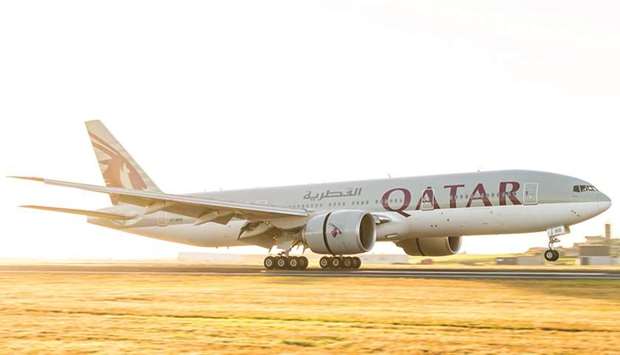When the Airbus A380 was launched in 2007, it caused a sensation: a double-decker plane so big it can’t even land at some airports. In some configurations, it can seat more than 600 passengers.
However, it now looks as though the trend is going in the other direction: smaller planes are increasingly being used for long distance flights, over the Atlantic for example.
For travellers, that could mean two things: they may have to change planes less often; and ticket prices may fall.
“The big planes are designed to fly from hub to hub,” says Hamburg-based aviation expert Cord Schellenberg. Smaller planes bring passengers to the hubs – such as London, Doha, or Frankfurt – where they then get on the big planes. Travellers can also fly to smaller regional airports from the hubs.
But there has also been a lot of change in the industry over the past few years, much of it precipitated by low-cost airlines, according to Schellenberg. “They’re flying smaller planes to smaller airports,” he says.
These so-called point-to-point flights are appealing to many people: instead of flying from Frankfurt to Athens, you can fly from Baden-Baden to Thessaloniki; instead of London to Paris, try Bristol to La Rochelle. The journey is shorter with no need to change.
The concept could now be implemented on an intercontinental scale. Planes like Airbus’ A320neo and Boeing’s 737 Max are being fitted out so that they can travel from, for example, Germany to the US east coast.
Norwegian is planning to fly from Ireland and Britain to the US at cheaper prices starting from July. The new machines can even fly from central Europe over the Atlantic.
“That means smaller places can be connected with each other,” says Johannes Reichmuth, director of the Institute of Airports and Air Traffic at the German Aerospace Centre.
Why fly from London or Frankfurt to the US when you could fly direct from Hamburg, Manchester or Vienna?
Whether a long-haul flight on a smaller plane will be as comfortable as on a big jet depends on the airline – they’re responsible for the seat layout.
The airlines are keen to keep a fairly uniform fleet, capable of reaching as many destinations as possible. “That means they can try out routes, and if it doesn’t work out they can stop,” says Reichmuth. If a plane can be used to fly to more destinations, it increases the fleet’s capacity.
The new planes, which use less fuel than larger models, also mean that passengers can worry less about their carbon footprint.
New models are also making ultra-long journeys possible. “That means journeys of longer than 10,000 kilometres,” says Reichmuth.
Qantas is planning the first direct flight from Australia to Europe from March 2018. Flights will take off from Perth, western Australia and land 17.5 hours and 14,500 kilometres later in London. The model that has made this possible is the Boeing 787 Dreamliner.
If that sounds like your worst travel nightmare, Qantas boss Alan Joyce has promised that economy class will be made more comfortable.
It’s hoped the service will reduce jet lag, and the Dreamliner has also been fitted out with technology that should improve air quality in the cabin, reduce noise and make turbulence less noticeable.
Qatar Airways currently holds the record for the longest route with its flight from Doha to Auckland, at 14,535 kilometres. It uses a Boeing 777-200LR, in which the LR stands for Longer Range.
Airlines are also working on a non-stop flight from London to Sydney, a distance of almost 18,000 kilometres. “They could potentially use an Airbus A350-900 ULR [Ultra Long Range] or the Boeing 777X,” says Schellenberg.
While Singapore Airlines is expecting delivery of the long-range A350 next year, the Boeing isn’t expected to be ready until 2019 or 2020.
But there’s also the question of how many passengers will be able to afford these non-stop tickets.
“The tickets will definitely become more expensive if the journey is non-stop,” says Schellenberg.
There aren’t that many business travellers between Europe and Australia, after all, and holidaymakers may be happy to continue changing in Qatar. -DPA

Qatar Airways’ Boeing 777-200LR, which flies non-stop from Doha to Auckland.


